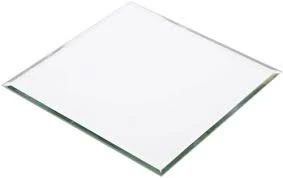

The Elegance of Mirror Glass Design A Reflection of Modern Aesthetics
In recent years, mirror glass design has emerged as a leading trend in contemporary architecture and interior design. This innovative material not only serves functional purposes but also transforms spaces, creating a sense of elegance and sophistication. With its ability to reflect light and surroundings, mirror glass has become a popular choice for designers looking to enhance their projects with a modern touch.
The Versatility of Mirror Glass
One of the most captivating features of mirror glass is its versatility. It can be applied in various contexts, from residential settings to commercial spaces, and even in public architecture. In homes, mirror glass can be incorporated into furniture pieces, such as coffee tables or cabinets, adding a dramatic flair to living spaces. Its reflective quality is particularly valuable in smaller rooms, where it creates an illusion of depth and brightness, making the space feel larger and more open.
In commercial design, mirror glass is often used in facades and storefronts. The sleek, shiny surface attracts attention and can make a bold statement about the brand. For instance, high-end retail stores frequently utilize mirror glass to convey luxury, while restaurants may use it to create an inviting atmosphere. The reflective nature of this material can also enhance the exterior of buildings, allowing them to blend seamlessly with their surroundings, thereby improving urban aesthetics.
Enhancing Natural Light
One of the primary benefits of using mirror glass is its ability to harness natural light. In a world increasingly focused on sustainability and energy efficiency, utilizing design elements that maximize daylight is crucial. Mirror glass can help in this regard by reflecting sunlight and brightening up interiors without the need for excessive artificial lighting. As a result, spaces can feel more vibrant and alive, positively impacting the mood and productivity of the occupants.
In large public spaces, such as lobbies or atriums, mirror glass can be strategically placed to create stunning visual effects. The reflections can play with the perception of space, resulting in environments that are not only functional but also visually stimulating. Furthermore, this design technique can reduce the reliance on energy-consuming lighting solutions, aligning with eco-friendly design principles.

Creative Applications
The applications of mirror glass extend beyond mere reflections. Designers are increasingly experimenting with shapes, textures, and finishes to create unique visual experiences. For instance, sculptural installations made from mirror glass can serve as eye-catching focal points in galleries or public squares. These installations invite viewers to interact with their surroundings and themselves, blurring the lines between art and architecture.
Moreover, mirror glass can be treated with various coatings to achieve different effects. For example, tinted mirror glass provides privacy without sacrificing light. This characteristic is especially beneficial in bathrooms or bedroom settings where one desires a sense of intimacy while still enjoying natural light. Additionally, the use of colored or frosted mirror glass can introduce a unique aesthetic element, allowing designers to innovate beyond traditional clear mirrors.
Challenges and Considerations
While the allure of mirror glass is undeniable, it does come with its own set of challenges. For one, keeping mirror glass clean and free of smudges can be a demanding task. Regular maintenance is essential to preserve its reflective quality and aesthetic appeal. Furthermore, depending on the context, too much mirrored surface can create a disorienting effect, potentially overwhelming the space. As with any design element, balance and moderation are key to successfully incorporating mirror glass into a project.
Conclusion
In conclusion, mirror glass design represents a fascinating intersection of functionality and artistry. Its ability to reflect light and surroundings not only enhances the aesthetics of spaces but also promotes sustainability through natural light utilization. As designers continue to push the boundaries of what mirror glass can achieve, we can expect to see even more innovative applications that inspire and transform the environments in which we live and work. As we embrace the elegance of this medium, we shall undoubtedly reflect on the beauty it brings to our modern world.